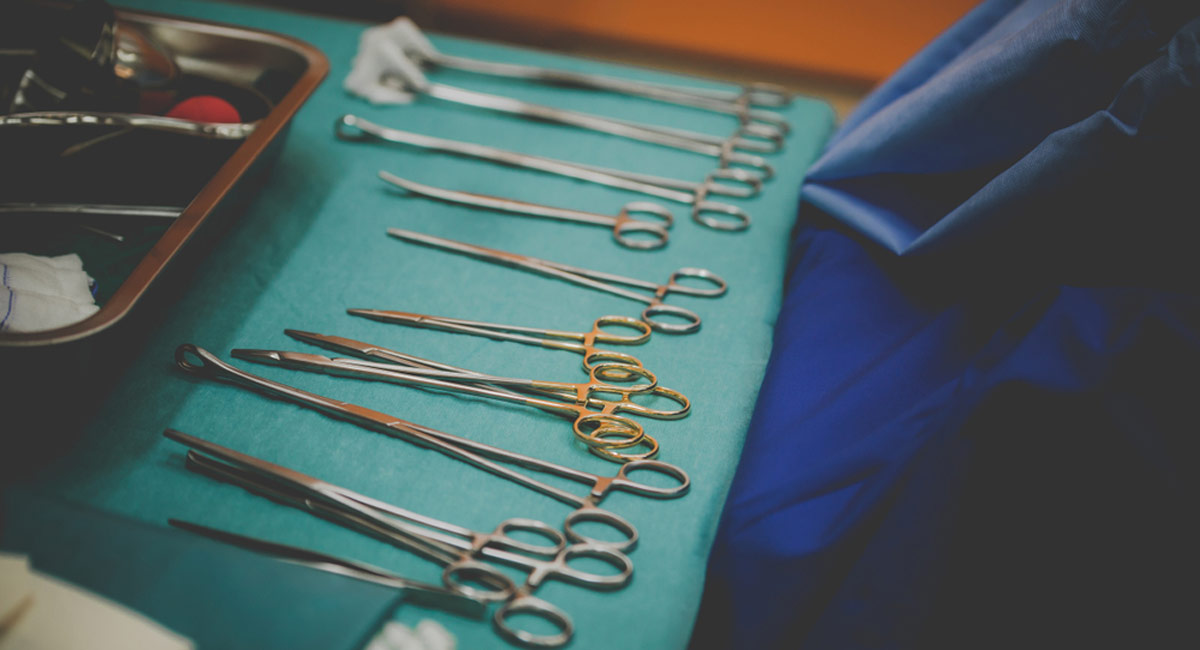According to data reviewed by Live Action News, two gruesome abortion procedures used shortly after abortion was legalized are being used again today, and the reason is unclear: the hysterectomy/hysterotomy and saline abortion methods. While some saline (prostaglandin) reports could be the result of miscoding, there is a concern that hysterotomy abortions conducted in both the first and second trimesters — which are very dangerous for women — could be used to procure live human specimens for ghoulish research like the experiments conducted using aborted children at the University of Pittsburgh.
WARNING: Graphic images of abortion victims below.
In 1973, journalist Nick Thimmesch described these horrific procedures in a Newsweek article, “The Abortion Culture.” He wrote, “The saline solution burns away the outer layer of the baby’s skin. The ultimate is the hysterotomy (Caesarean section) abortion. As an operation, it can save mother and child; as an abortion it kills the child. Often, this baby fights for its life, breathes, moves and even cries…”
The images below from the 1981 pro-life brochure, “Death or Life” by Hayes Publishing, shows the end result of both gruesome abortion methods.
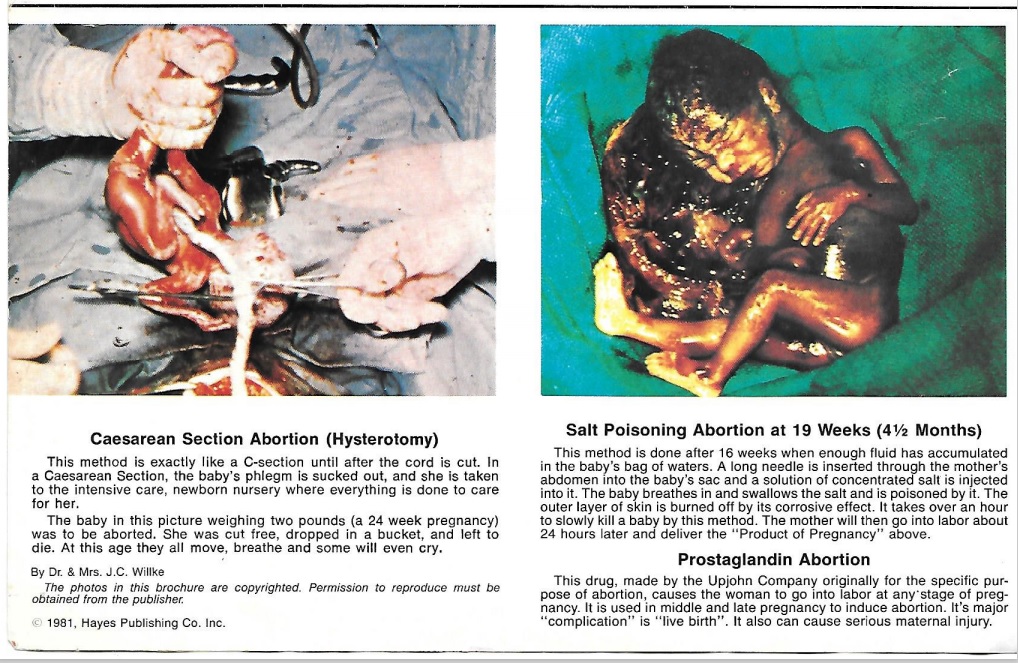
Hysterotomy abortion and Saline or Prostaglandin abortion (Image: pamphlet Life or Death Hayes Publishing)
In 1976, doctors testifying before a Senate panel also described these horrific procedures.
“The child is alive and often breathing when he is delivered, but because it has been removed from the mother by an abortion rather than by delivery, it is then killed, either directly, by drowning or asphyxiation, for example, or indirectly by exposure,” Maryland physician William F. Colliton, Jr. told the panel regarding hysterotomy abortion.
Dr. William J. Godfrey, a specialist in internal medicine, was equally as descriptive. “When aborted, such babies move their arms and legs and try to breathe but, due to their immaturity, they finally die on the table with the help of the willful neglect of the medical personnel,” he told the panel. “And if the baby is still alive when the obstetrician is finished caring for the mother, in order that the next case may come into the delivery room, the baby may even be put to death by suffocation. And to put further bloody icing onto the cake, these are the very live babies some proabortionists are advocating that we turn over for experimentation with the false pretentions of helping mankind. A good pragmatic example of the end justifying the means.”
Godfrey then described the saline abortion. “It’s called salt poisoning. Upon injection of the salt, that is, saline, into the woman’s amniotic fluid, the baby swallows and breathes it in. He usually struggles for life for about 45 to 60 minutes with repeated convulsions, for the salt water swells his brain cells,” he said. “The woman feels her baby convulsing again and again until he finally dies. The corrosive salt water burns the outer layer of skin from his body and he develops the red appearance of inflammation. And thus these babies have been called the ‘candy apple babies’.”
Grisly abortion methods committed today
The state of Minnesota describes the saline injection or Intrauterine instillation abortion as, “Termination of pregnancy induced through intra‐amniotic injection (amniocentesis‐injection) of a substance such as saline, urea, or a prostaglandin.” They also describe Hysterotomy/hysterectomy abortion as, “Termination of pregnancy by removing the fetus through an incision in the uterus or by removing the uterus.”
Live Action News reviewed several state reports that publish data on procedures used. We discovered:
- Missouri 2019 – Four (4) “intrauterine instillation” abortions and one (1) hysterotomy/hysterectomy all committed after the second trimester
- Pennsylvania 2019 – Eight (8) hysterotomy/hysterectomy abortions and three (3) intra-uterine instillation (saline or prostaglandin) abortions conducted in both first and second trimesters
- South Carolina 2019 – One (1) hysterotomy/hysterectomy abortion conducted in the second trimester
- Michigan 2020 – Two (2) saline or prostaglandin abortions and two (2) hysterotomy/hysterectomy procedures, conducted after second trimester
- Texas 2020 – One (1) hysterotomy/hysterectomy abortion
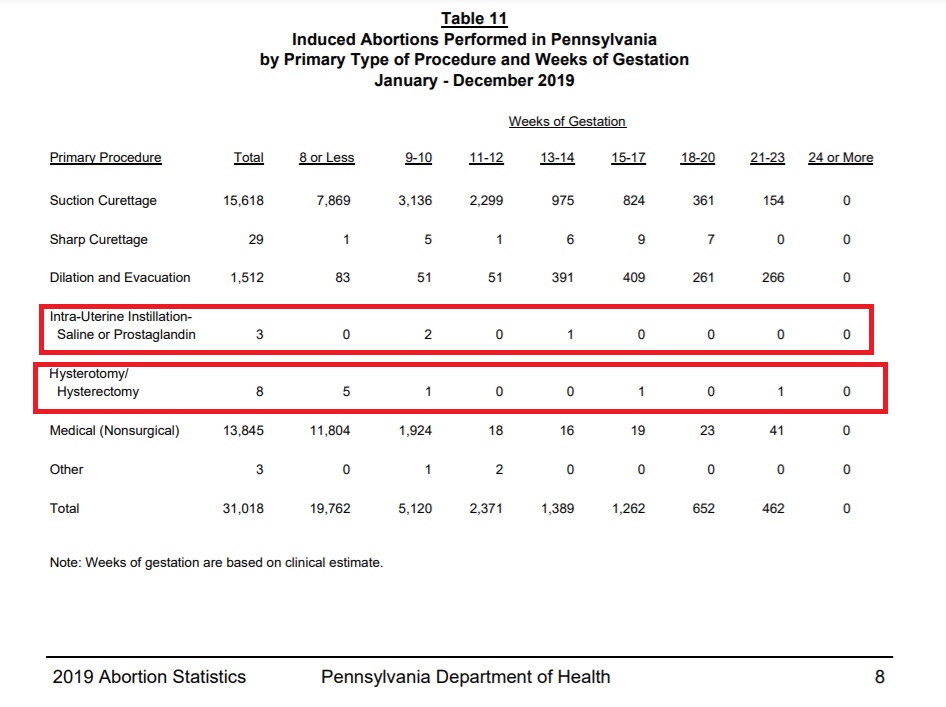
2019 PA abortion by procedure hysterotomy and saline abortions
While the Centers for Disease Control and Prevention (CDC) called the hysterotomy/hysterectomy and saline abortion methods “uncommon” and “rare,” the organization recorded five committed in Florida and 15 in New York in its 2018 report.
The report later showed that 44 hysterotomy/hysterectomy abortions and 164 intrauterine instillation abortions were committed nationally in both the first and second trimesters in 2018. That same year, the state of New York reported committing 121 saline injection abortions, as well as 68 prostaglandin abortions.
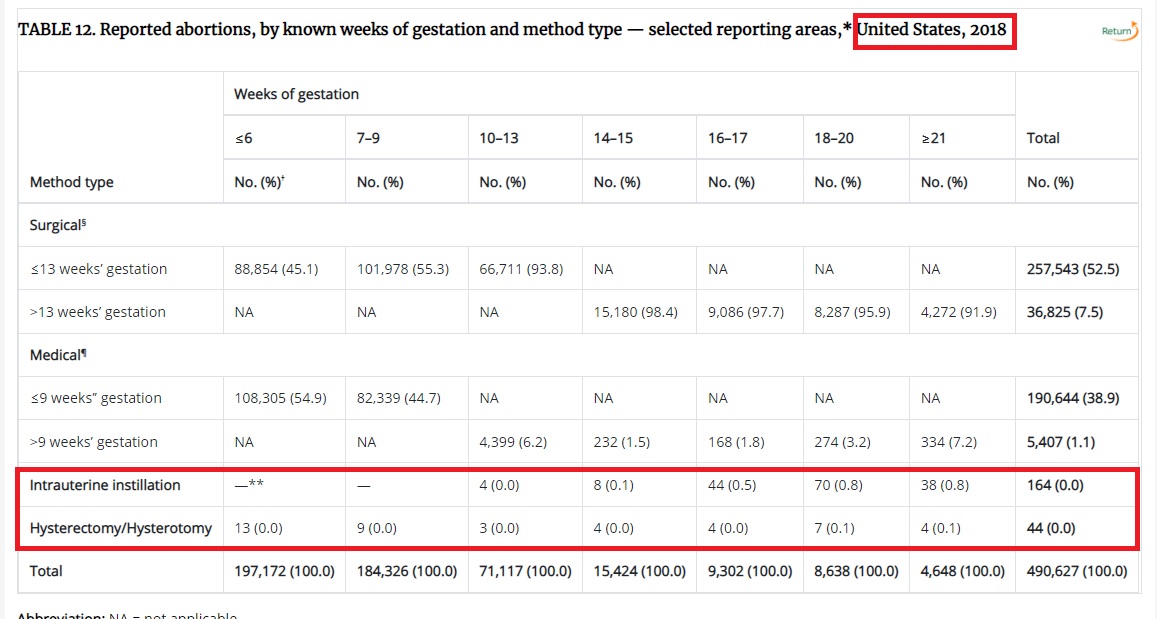
2018 CDC abortion by procedure hysterotomy amd saline abortions
Research on abortion survivors
Historically, hysterotomy has been tied to research on live aborted children.
Live Action News previously documented how University of Pittsburgh anatomist Davenport Hooker conducted research on children who survived surgical abortion by hysterotomy. Hooker even published a film showing how he stimulated the skin of “therapeutically aborted fetuses removed by Caesarian section,” according to PittMed, a publication of the University of Pittsburgh.
His “Early Fetal Human Activity” film (below) showed the muscle activity of six aborted children ranging from 8 1/2 to 14 weeks. (Warning – Images may be disturbing for some):
Live Action News previously uncovered a report published by the Journal of Clinical Pathology, which documented that thousands of aborted human babies were collected by a fetal tissue bank located in the UK after being aborted by hysterotomy, prostaglandin induction, and suction abortion. In just one year (1968), 757 babies killed by hysterotomy abortion were procured by the tissue bank for research, which received nearly 200 aborted children in a typical month, including “whole fetuses” obtained by prostaglandin abortion.
A 1970’s national commission tasked to investigate research involving “nonviable fetus during abortion by hysterotomy” also detailed several ghoulish experiments, including one conducted “to learn whether the human fetal brain could metabolize ketone bodies as an alternative to glucose.” In this experiment, “brain metabolism was isolated in eight human fetuses (12-17 weeks gestation) after hysterotomy abortion by perfusing the head separated from the rest of the body.”
Stacy Trasancos, Ph.D., reviewed 1972 research and found that preborn children were born alive during hysterotomy abortions for the purpose of experimentation, according to a previous Live Action News report. Her findings, published at Catholic Stand, claimed that researchers “conducted the ‘in vivo’ experiments by surgically cutting open the uterus of the mother, lifting out the living fetus with the umbilical cord still attached, and injecting the amino acids into the umbilical vein. Then they waited 10 minutes with the heart still beating and the fetus still moving to allow the body to distribute and metabolize the amino acids. After 10 minutes, they cut the umbilical cord, dissected the brain and liver from the body of the fetus, and dropped the organs into liquid nitrogen to await analysis.”
A 1975 New York Times article detailed an experiment called “An Artificial Placenta,” in which “eight fetuses were obtained by hysterotomy.” Quoting authors of the study, the paper wrote, “For the whole 5 hours of life, the fetus did not respire. Irregular gasping movements, twice a minute, occurred in the middle of the experiment but there was no proper respiration. Once the perfusion [i.e., the pumping‐in of oxygenated blood] was stopped, however, the gasping respiratory efforts increased to 8 to 10 per minute. After stopping the circuit, the heart slowed, became irregular and eventually stopped. The fetus was quiet, making occasional stretching limb movements very like the ones reported in other human work. The fetus died 21 minutes after leaving the circuit.”
Despite the controversial nature of this experiment, the paper reported that “shortly after this research was completed, it won the Foundation Prize Award from the American Association of Obstetricians and Gynecologists [ACOG].”
Witness to hysterotomy abortion
Thomas W. Hilgers, M.D., recounted to a Senate panel in 1976 how a nurse suffered a “severe anxiety reaction” after taking part in a hysterotomy abortion on a woman who was 20 weeks pregnant.
“When asked by this nurse if he [the abortionist] would send the baby to the nursery for care, he stated that since the baby was only a ‘pathology specimen’ that it would be sent to the path laboratories,” Hilgers said. “This caused the assisting nurse great despair which took her several days to come out of. Similar reports of staff reactions have now been reported in a number of articles in the medical literature. And in one year alone in New York State, over 1,800 such living ‘abortions’ were born and left to die,” he stated.
Dr. David Brewer thought seeing a “baby that young” would be “kind of exciting,” so he assisted in a hysterotomy abortion and later recorded what he witnessed. “I remember as we made the incision and got in and made the incision in the uterus, to see the baby move underneath the sack of membranes as the Caesarean incision was made before the doctor broke the water. The thought came to me, my God, that’s a person! Then he broke the water… delivered the baby… They simply took that little baby that was making little sounds and moving and kicking over and set it on the table in a cold stainless steel bowl,” he wrote.
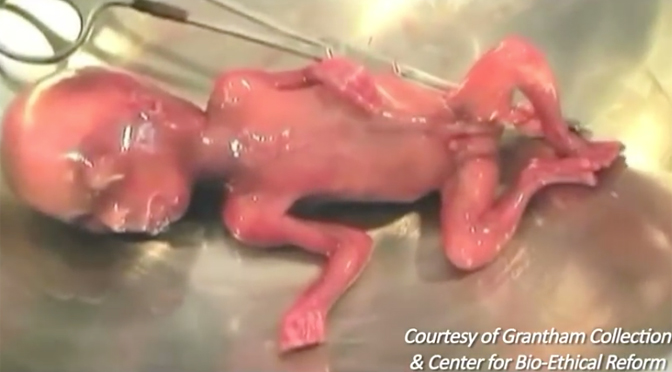
Photo of aborted baby left to die, from the Grantham Collection
“I can remember going over and looking at the baby when we were done with the surgery and the baby was still alive. You could see the chest was moving and the heart was beating, and the baby would try to take a little breath, and it really hurt inside, and it began to educate me as to what abortion really was,” Brewer stated.

